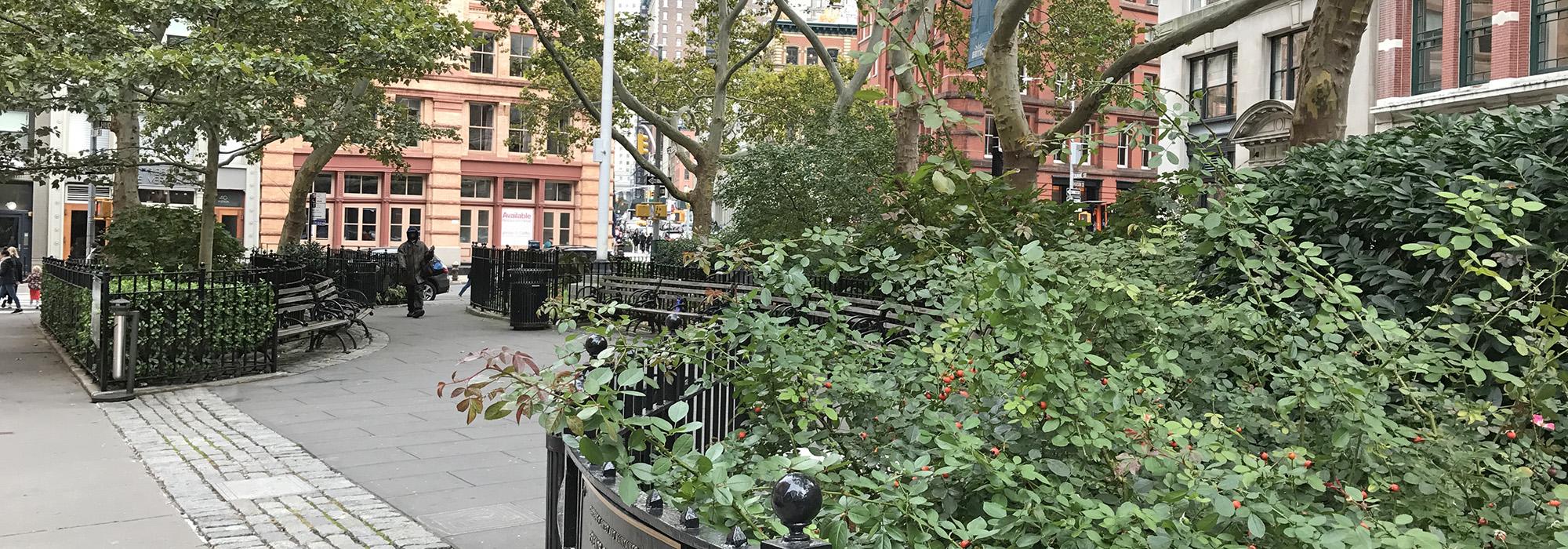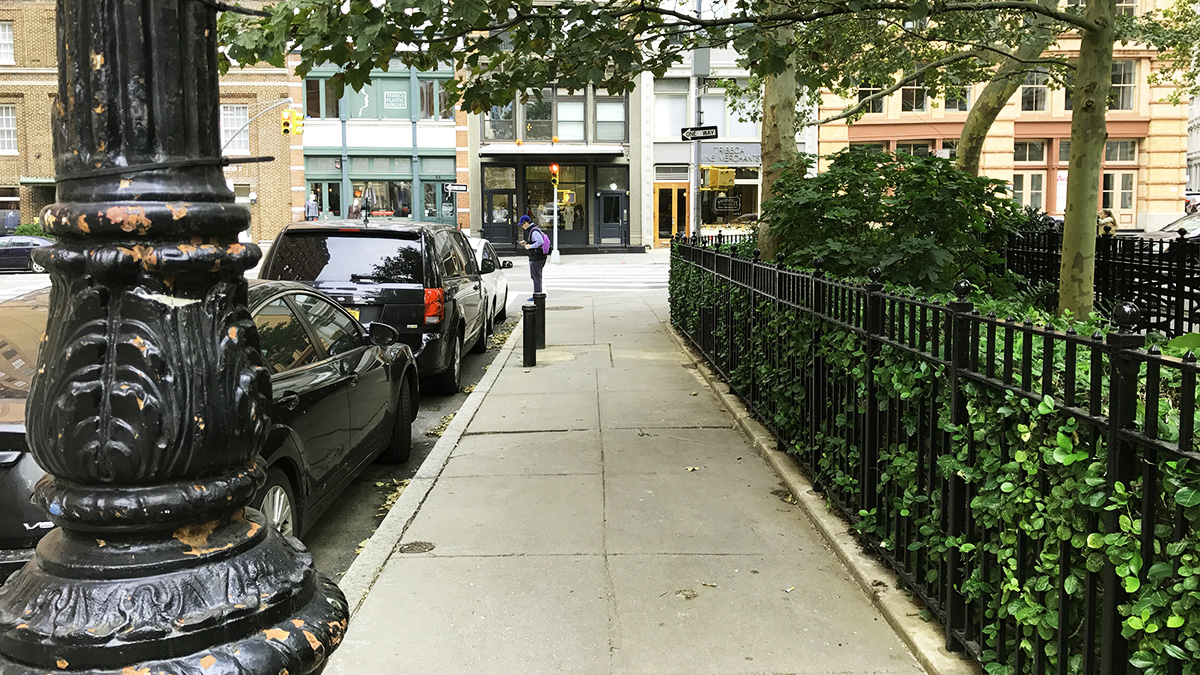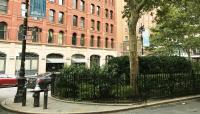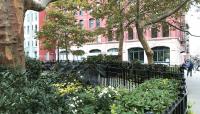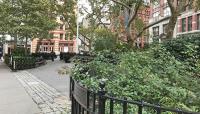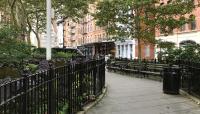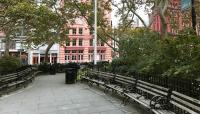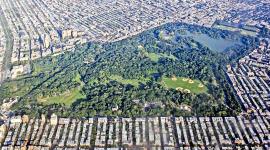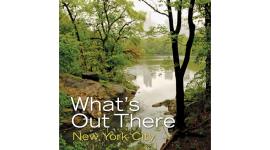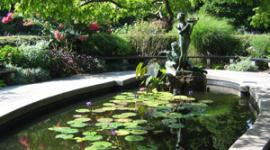Landscape Information
Purchased in 1797 from the Trinity Church for five dollars, Duane Park was the first public space acquired by New York City specifically for use as a public park. Occupying a small triangular space at Hudson and Duane Streets in Manhattan and named for James Duane (1733-1797), New York’s first mayor after the Revolutionary War, the park is also the last remnant of the greensward of the Annetje Jans farm, granted to Roelfoff and Annetje Jans in 1636 by Governor Wouter Van Twiller. Originally an open common after the city’s purchase, the park was later enclosed by an iron fence with a granite base, and by 1870 it featured bluestone curbing, graded tree plantings, a lawn, shrubs, and twelve new street trees—all part of a design by Parks Chief Engineer M.A. Kellogg and Chief Gardner Ignatz Pilat.
As part of a city-wide effort to improve public access to enclosed parklands, a new plan for the space was proposed in 1887 by Calvert Vaux and Samuel Parsons, Jr. The plan included paths curving in from each surrounding street. Parsons believed that “the application of a little lawn planting intelligence” would bring relief to the otherwise “crowded and dusty” Manhattan neighborhood. Under the auspices of the Works Progress Administration, landscape architect Janet Patt and Gilmore D. Clarke redesigned the park in the Beaux-Arts style in 1940, reducing the planted area and adding a central flagpole. In 1999 a plan by landscape architect Signe Nielsen replaced much of the paved area with planting in an attempt to restore the site to the Vaux-Parsons design.



